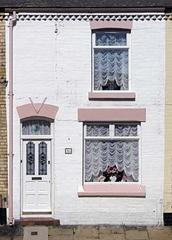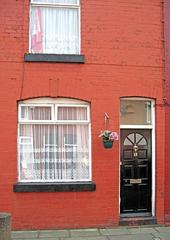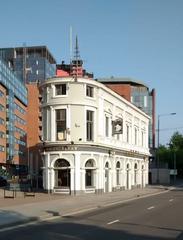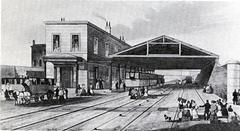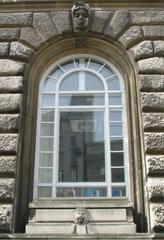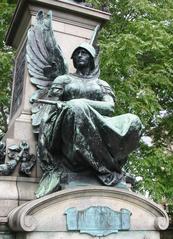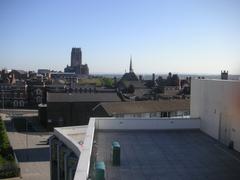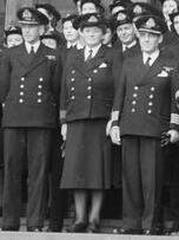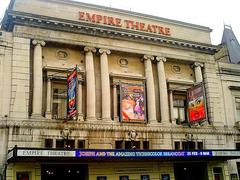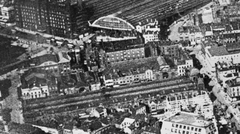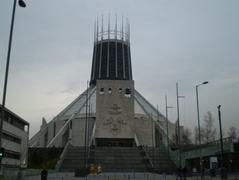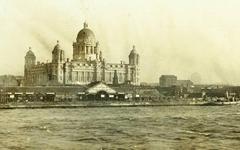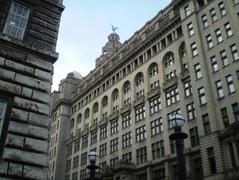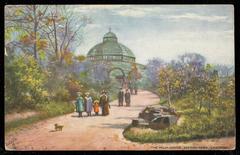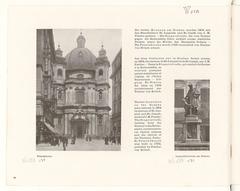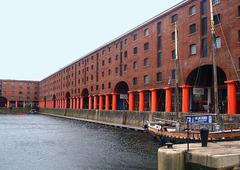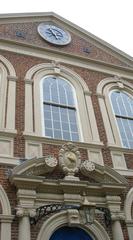
Liverpool Sailors’ Home Visiting Hours, Tickets, and Historical Significance: The Complete Guide
Date: 04/07/2025
Introduction
The Liverpool Sailors’ Home stands as a powerful symbol of Liverpool’s maritime heritage and its longstanding commitment to the welfare of seafarers. Though the original building was demolished in the 1970s, its legacy endures through preserved artifacts, the iconic wrought iron gates, museum displays, and ongoing public commemorations. This comprehensive guide explores the history, architectural significance, and present-day visitor experience of the Liverpool Sailors’ Home, providing essential information on visiting hours, tickets, accessibility, and nearby attractions to help you make the most of your visit to this remarkable historical site (Wikipedia; Chester Walls; Liverpool Echo; Museum of Liverpool).
Table of Contents
- Introduction
- Historical Overview
- The Sailors’ Home Legacy Today
- Visitor Information
- Frequently Asked Questions (FAQs)
- Conclusion and Call to Action
- Sources and Further Information
Historical Overview
Foundation and Purpose
Established in 1850, the Liverpool Sailors’ Home was created in response to the hazardous and exploitative conditions confronting seafarers arriving at Liverpool—then one of the world’s busiest ports. The Home was envisioned as a safe, affordable, and respectable alternative to the dockland lodging houses notorious for vice and crime (Wikipedia). Its mission included:
- Providing secure, affordable accommodation and meals
- Offering medical care and moral guidance
- Supporting self-improvement and education
- Protecting sailors from exploitation by crimps and unscrupulous employers (Wikipedia)
Architecture and Design
The Home was designed by Scottish-born architect John Cunningham in a striking neo-Elizabethan Tudor style. Notable architectural features included:
- A large central courtyard, reminiscent of a ship’s quarters, surrounded by galleries over several floors
- Cast iron columns and balustrades adorned with rope-work, dolphins, mermaids, and other nautical motifs
- The ornate main gates—crafted by Henry Pooley Jnr.—featuring the Liver Bird and elaborate maritime iconography
The building was both a practical refuge and a civic statement, reflecting Liverpool’s pride in its maritime identity and its philanthropic spirit (Chester Walls).
Social and Cultural Impact
The Sailors’ Home quickly became the heart of Liverpool’s seafaring community:
- Offered a safe haven and a sense of belonging for sailors from all over the world
- Provided reading rooms, a library, religious services, and instruction in navigation and literacy
- Fostered multicultural exchange, with sailors from Africa, Asia, Europe, and the Americas passing through its doors
- Played a key role in advocating for sailors’ rights, supporting campaigns that led to reforms like the Merchant Shipping Act of 1854 (Merchant Navy Forum)
Key Events and Features
- The Iconic Gates: The Home’s iron gates (installed in 1852) became a city landmark, renowned for their craftsmanship and maritime symbolism (Liverpool Echo).
- The 1860 Fire: A major fire severely damaged the building, but it was restored and reopened, underscoring its community importance.
- Decline and Closure: The Home’s role diminished as Liverpool’s shipping industry changed. It closed in 1969, with the building demolished in 1974-75 (Chester Walls).
The Sailors’ Home Legacy Today
Surviving Artefacts and Sites
- Restored Main Gates: After being removed in the 1950s, the gates were restored and returned to Liverpool ONE in 2011. They now stand near the John Lewis store, close to the original Canning Place site, and are accessible to the public at all times (Liverpool Echo).
- Other Artefacts: Ornamental railings, the Home’s gilded sign, and other fragments survive in museum displays and private collections.
Museum Exhibits
- Museum of Liverpool: The museum’s “People’s City” gallery features Sailors’ Home artefacts, including a section of mermaid railing and the residents’ register. The museum is open daily from 10:00 AM to 5:00 PM, with free admission (Museum of Liverpool).
- Merseyside Maritime Museum: Located at Royal Albert Dock, this museum contextualizes the Sailors’ Home within Liverpool’s wider maritime history.
Community Memory and Commemoration
- The National Museums Liverpool and the Museum of Liverpool collect oral histories and memorabilia related to the Sailors’ Home, ensuring its story is preserved for future generations (Art in Liverpool).
- The Home is remembered as a symbol of Liverpool’s hospitality, multiculturalism, and social reform efforts.
Visitor Information
Visiting Hours and Tickets
- Sailors’ Home Gates: Located outdoors at Liverpool ONE, next to John Lewis. Accessible at all times, with no admission fee.
- Museum of Liverpool: Open daily, 10:00 AM–5:00 PM. Free entry; some special events or exhibitions may require tickets.
- Merseyside Maritime Museum: Open daily, 10:00 AM–5:00 PM. Free entry; check for special exhibitions (National Museums Liverpool).
Accessibility and Location
- Both the Sailors’ Home gates and the museums are wheelchair accessible.
- Liverpool ONE bus station and James Street Merseyrail station are nearby, offering convenient public transport access.
Guided Tours and Nearby Attractions
- Walking Tours: Several local operators offer guided walks that include the Sailors’ Home gates and other maritime landmarks. These tours provide valuable context and personal stories (Full Suitcase).
- Nearby Attractions: Royal Albert Dock (a UNESCO World Heritage Site), International Slavery Museum, The Beatles Story Museum, and Tate Liverpool.
Travel Tips
- The Sailors’ Home gates are a popular photography spot—visit early for the best light and fewer crowds.
- Combine your visit with a walk along the waterfront, stopping at the Museum of Liverpool and Merseyside Maritime Museum for a fuller experience of Liverpool’s port history.
Frequently Asked Questions (FAQs)
Q: Where can I see the Liverpool Sailors’ Home gates?
A: The restored gates are outdoors at Liverpool ONE, next to the John Lewis store, and accessible at any time.
Q: What are the Museum of Liverpool’s visiting hours and ticketing policy?
A: Open daily, 10:00 AM–5:00 PM. Admission is free; tickets may be required for some temporary exhibitions.
Q: Are guided tours available?
A: Yes, maritime-themed walking tours often include the Sailors’ Home gates and surrounding historic sites. Book through local tour operators.
Q: Is the site wheelchair accessible?
A: Yes, both the outdoor gates and the museums are fully accessible.
Q: Can I see original artefacts from the Sailors’ Home?
A: Yes, artefacts are displayed at the Museum of Liverpool and Merseyside Maritime Museum.
Conclusion and Call to Action
The Liverpool Sailors’ Home is more than just a lost building—it’s a living chapter in the city’s ongoing maritime story. Visitors today can engage with this legacy through the beautifully restored gates, thoughtfully curated museum exhibits, and commemorative events that honor the diverse seafarers who shaped Liverpool’s identity.
Plan your visit to these sites and immerse yourself in the history of Liverpool’s maritime past. For up-to-date information, interactive walking tours, and personalized guides, download the Audiala app and follow local tourism channels. Experience, learn, and celebrate Liverpool’s seafaring spirit firsthand!
Sources and Further Information
- Liverpool Sailors’ Home (Wikipedia)
- Liverpool Sailors’ Home Gallery (Chester Walls)
- Incredible Sailors’ Home Once Stood (Liverpool Echo)
- Liverpool Sailors’ Gates Welcomed Back (Liverpool Echo)
- Museum of Liverpool Official Site
- Visit Liverpool Tourism
- Liverpool Sailors’ Home Records (National Museums Liverpool)
- Flashback City’s Victorian Treasure (Liverpool Echo)
- Appeal for Memories of Liverpool Sailors’ Home (Art in Liverpool)
- UK Travel Planning Liverpool Travel Guide
- Full Suitcase: Things to Do in Liverpool
- Merchant Navy Forum
- One Day Itinerary: Liverpool



